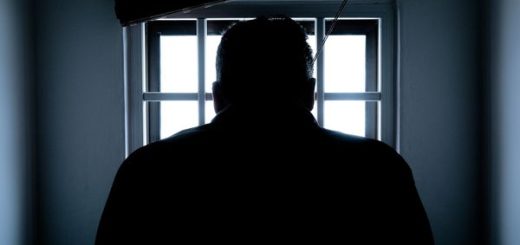“Fundamentally Fair Justice”: R v Esseghaier and Procedural Fairness in Jury Selection

In trials where juries are involved, jury selection is a key process. It ensures that the accused receives a fair and impartial hearing, to which they have a right under s. 11(d) of the Canadian Charter of Rights and Freedoms [Charter]. The issue of whether this very right was violated was addressed in R v Esseghaier, 2021 SCC 9 [Esseghaier], after the trial judge denied the accused’s request to have his jury selected using the rotating triers method instead of the static triers method.
In a unanimous decision, the Supreme Court of Canada (“SCC”) allowed the appeal and ruled in favour of the Crown. The Court stated that, although the trial judge erred procedurally by denying the accused’s request, s. 686(1)(b)(iv) of the Criminal Code, RSC 1985 c C-46 [Criminal Code], could be applied to cure the trial judge’s error. In doing so, the SCC signalled that appellate courts should not hesitate to use their remedial powers under s. 686(1)(b)(iv) and effectively narrowed how fairness is interpreted in the context of jury selection.
Background
On April 22, 2013, Messrs. Esseghaier and Jaser were arrested and charged with various terrorism offences under Part II.1 of the Criminal Code. The long list of charges included: conspiracy to damage transportation infrastructure with intent to endanger safety for the benefit of a terrorist group (ss. 83.2, 248 and 465(1)(c)); conspiracy to commit murder for the benefit of a terrorist group (ss. 83.2 and 465(1)(a)); and two counts each of participating in or contributing to the activity of a terrorist group (s. 83.18(1)) (Esseghaier, para 11). The primary plot was to derail a VIA passenger train traveling between Toronto and New York, with the ultimate aim of killing the passengers (Esseghaier, para 12).
Prior to the trial, Mr. Jaser brought a motion to elect a method of jury selection (Esseghaier, para 15). In 2014, at the time of the hearing, the Criminal Code provided two methods of selecting jury members: the rotating triers method and the static triers method. The rotating triers approach involves two random members of the jury panel serving as triers. These triers assess potential jurors for impartiality until the first jury member is chosen. The first juror replaces one of the triers until the next prospective juror is selected, and the process continues until the jury is filled (Esseghaier, para 16). By contrast, the static trier approach, which was introduced to the Criminal Code in 2008, involves two persons deciding the entire jury. These two triers are then excused from being a part of the jury (Esseghaier, para 17). The default method of jury selection remained the rotating triers approach, even after the 2008 amendment was passed (Esseghaier, para 18).
Mr. Jaser wanted the jury to be selected using the rotating triers approach, in order to “ensure that they [we]ren’t exposed to the process in terms of the challenge for cause ahead of time and be able to tailor answers” (Esseghaier, para 20). The trial judge, however, denied Mr. Jaser’s request, stating that the introduction of the static triers approach removed common law discretion to order the exclusion of prospective jurors (Esseghaier, para 22). Moreover, the trial judge asserted that, even if he had the power to exclude jurors, he would not exercise his discretion because it would be an “improper” exercise of discretion (Esseghaier, para 23). Ultimately, the jury, selected using the static trier approach, convicted Mr. Esseghaier on all counts and Mr. Jaser on all counts but one (Esseghaier, para 26).
Both the accused individuals appealed their verdicts and sentences, but a motion for a bifurcated hearing was brought, so that the jury selection issue could be heard separately and in advance of the other grounds of appeal (Esseghaier, para 26). The bifurcation request was granted, and in 2019, the Ontario Court of Appeal (“ONCA”) addressed the issue of jury selection on its own. The ONCA found that the trial judge had erred in concluding that common law discretion did not exist. The trial judge had also erred in deciding that, if he in fact had discretion, he should decline to exercise it (Esseghaier, para 28).
The ONCA then proceeded to assess whether the curative proviso, provided in s. 686(1)(b)(iv) of the Criminal Code, could apply in this case. Section 686(1)(b)(iv) states:
On the hearing of an appeal against a conviction… the court of appeal…may dismiss the appeal where… notwithstanding any procedural irregularity at trial, the trial court had jurisdiction over the class of offence of which the appellant was convicted and the court of appeal is of the opinion that the appellant suffered no prejudice thereby.
The ONCA concluded that the curative proviso could not save the trial judge’s errors for two reasons. The first was that the jury had been improperly constituted and therefore fell outside of the purview of the curative proviso (R v Esseghaier, 2019 ONCA 672 [Esseghaier ONCA], para 70). The second was that, even if the court had jurisdiction, the error caused prejudice to the accused person, as it had a negative effect on the appearance of trial fairness (Esseghaier ONCA, para 71). This conclusion was in line with those in R v Noureddine, 2015 ONCA 770, and R v Husbands, 2017 ONCA 607, two cases that involved a trial judge rejecting an accused individual’s request to choose a jury selection method and resulted in the curative proviso being found inapplicable (Esseghaier ONCA, paras 72-3). As a result, the ONCA ordered a new trial to be held (Esseghaier ONCA, para 96).
The Decision
There were three issues before the SCC: (1) whether the trial judge had erred in refusing Mr. Jaser’s request for rotating triers; (2) if so, whether the error could be cured by s. 686(1)(b)(iv); and (3) if an appeal were allowed, what the appropriate remedy would be. Justices Moldaver and Brown, writing on behalf of the entire court, allowed the appeal. They answered the first two questions in the affirmative. The SCC agreed with the ONCA’s finding that the trial judge erred both in concluding that a common law discretion did not exist and that he should not exercise discretion even if the rotating trial approach had been selected (Esseghaier, para 33).
Where the SCC’s position differed was the application of the curative proviso. The SCC divided the provision into two parts in interpreting it. First, they addressed whether the trial court had “jurisdiction over the class of offence of which the appellant was convicted” (Esseghaier, para 35). Then, they reviewed the potential prejudice the appellant may have suffered (Esseghaier, para 35). To aid their interpretation, the Court directed its attention to Parliament’s underlying purpose of enacting the provision, which was to “expan[d] the remedial powers of courts of appeal” (Esseghaier, para 39). The Court relied on Justice Arbour’s judgment in R v Cloutier, (1988), 43 CCC (3d) 35 [Cloutier], in holding that “jurisdiction over the class of offence” referred to “subject-matter of the charge” (Cloutier, p 47). The classes of offence were defined as the three categories of offences enumerated in ss. 468, 469, and 785 of the Criminal Code. Because jurisdiction was broadly defined as applying to the subject-matter of the charges rather than the adjudicative capacity of the jury or trial judge, the SCC concluded that the issue of an improperly constituted jury is irrelevant in determining whether a trial court has “jurisdiction” (Esseghaier, para 47).
The SCC then proceeded to assess whether the accused individuals suffered prejudice due to the procedural error. Here, the Court held that the accused individuals were not prejudiced because of the error for two reasons. First, the static triers procedure was enacted by Parliament with the intent of ensuring a fair trial by an independent and impartial jury, which is to say that the procedure is not arbitrary or beyond the scope of what is expected in Court (Esseghaier, para 54). The second reason was that the adjudicators in this case had performed their duties seriously to preserve Messrs. Esseghaier and Jaser’s Charter rights (Esseghaier, para 53). As a result, the curative provisio was deemed to apply, the appeal was allowed, and a remedy remanding the outstanding grounds of appeal to the ONCA was given (Esseghaier, para 64).
Discussion
The broad interpretation of the curative proviso could have concerning implications for the administration of justice. For one, the SCC’s liberal interpretation of the provision is in a sense self-serving, as they themselves are an appellate court. Consequently, this strengthens judicial supremacy in our constitutional democracy, bolstering the courts’ role in criminal law decision-making. By furthering the judiciary’s role in reviewing criminal law errors, the courts may have weakened the constitutionally protected right to a fair trial and insulated its dominion over criminal law matters, an area of law which has developed much without the involvement of democratically elected officials and, in turn, the broader public. Although appellate courts weigh the public interest in their role as decision-makers, regard and deference ought to be afforded to the overarching judicial system, as it has been effective in ensuring a public perception of fairness for decades.
Additionally, the SCC’s finding that the accused individuals were not prejudiced despite the decision being rendered by an improperly constituted jury led to a strictly substantive interpretation of prejudice, one that failed to recognize the accused individual’s direct experience with the judicial process. Much of this interpretation of prejudice is grounded in the text of the legislation itself: s. 686(1)(b)(iii) defines prejudice as “no substantial wrong or miscarriage of justice”. This definition also applies to s. 686(1)(b)(iv). Yet the Court did not engage the question of whether this standard is apt for application under s. 686(b)(iv) because, in their eyes, the Crown had met its burden of establishing that the accused individuals were not prejudiced (Esseghaier, para 52).
It is concerning that the Court failed to explore this legal issue, as it could potentially have repercussions on the accused individuals’ cases. Had the Court reviewed how “substantial wrong or miscarriage of justice” ought to be interpreted, the issue of whether a strictly substantive interpretation of prejudice was appropriate could have been raised. In the current case, the accused did not experience “substantial wrong or miscarriage of justice”, as he was merely limited to choosing from two undesirable options. That said, from the accused individual’s perspective, being deprived of his right to engage in jury selection through a rotating triers method could be viewed as a limitation and thus a violation of his Charter right to a fair trial (Esseghaier ONCA, para 76). As was alluded to in the ONCA’s decision, “prejudice to the due administration of justice”, rather than the higher standard of substantive prejudice, should suffice as basis for a new trial.
Conclusion
In justifying its decision, the SCC stated that “our law does not demand perfect justice, but fundamentally fair justice” (Esseghaier, para 57, citing R v O’Connor, [1995] 4 SCR 411, para 193). Through this decision, the SCC concluded that the standard of “fundamentally fair justice” could be met and a right to a fair trial by an independent and impartial jury could be preserved if the court acts within the scope of its legislated powers and the adjudicators act with diligence to uphold justice. What is missing in this consideration, however, is the perception of fairness by the accused who, more than anyone else in a given trial, is impacted by the administration of justice. Although the curative proviso could empower appellate courts and make the judicial system more efficient by preventing new trials, it is worth asking whether a justice system that dismisses a trial judge’s error in procedural justice is indeed fundamentally fair.






Join the conversation